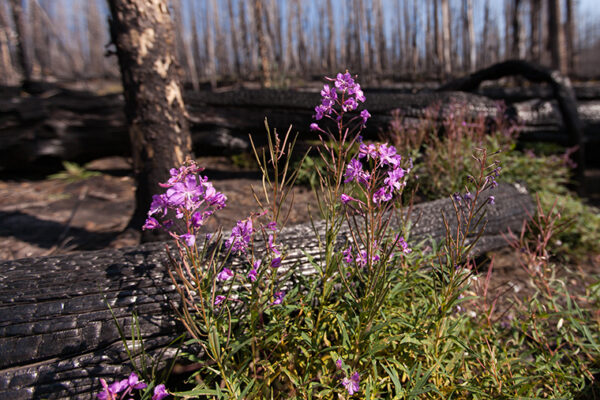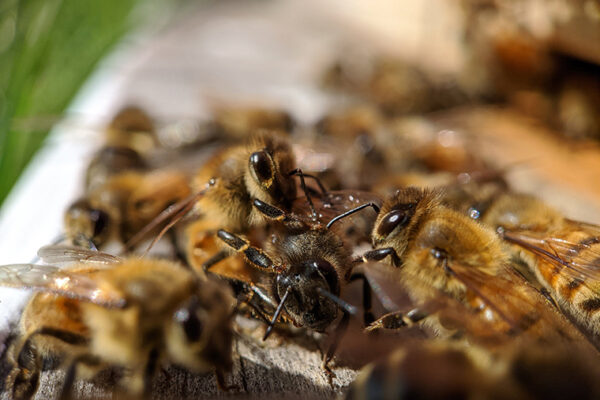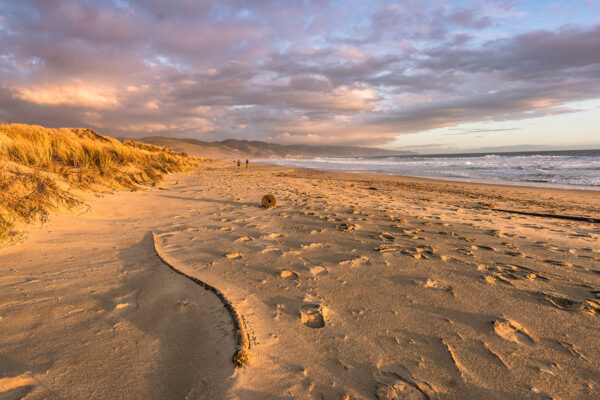After a long pandemic winter, people are eager to welcome the first cheerful blooms of spring. Lucky for them, many flowers really are popping open earlier in the year.
Not so lucky for some plants, though.
Plants that rely on bees or other insect pollinators to transport pollen between like individuals — buzzing from violet to violet, or trillium to trillium — face uncertainties when spring becomes front-loaded. Suddenly bees have a lot more flower options at the same time. A key question on researchers’ minds remains: How will this competitive atmosphere affect plants?

“Climate change is altering when plants are blooming, and it’s disrupting the historic relationships between plants and their pollinators,” said Matthew Austin, an ecologist and biodiversity postdoctoral fellow with the Living Earth Collaborative at Washington University in St. Louis. “But we know remarkably little about what effect that has on how plants interact with one another and the evolutionary consequences of altered plant-plant interactions.”
Not all plants are responding to climate change in the same way. Some are blooming earlier. Some might bloom for longer periods stretched across seasons. Where once it seemed like flowers came in successive waves, now the waves are piling up on top of each other. This piling up means that more species are blooming at the same time than in the past.
This spring, Austin is working with collaborators Adam Smith at the Missouri Botanical Garden and Kenneth Olsen, professor of biology in Arts & Sciences at Washington University, to explore how changes in flower timing affect ecological and evolutionary dynamics of pollination systems.
“My work is testing whether these altered flowering times are increasing rates of pollen transfer between different species,” Austin said. “And if that’s the case, I predict that high rates of pollen transfer between different species is leading to higher rates of self-fertilization.”
Where pollen lands doesn’t seem to matter much to bees, at least not in the short term. But for plants, reproduction depends on flowers receiving pollen of their own species. Pollen transferred to the wrong flower is basically a reproductive dead end.
And if bees are transporting pollen between different species of flowers more often now that many kinds of flowers are blooming at once, then these conditions could ultimately favor plants that cut out the pollinator middleman entirely.

To determine if this is actually happening, Austin is using historic data that documents when more than 70 species of plants have flowered at Shaw Nature Reserve, dating back to the late 1930s and early ’40s. He will combine those records with his own field observations at the reserve located near Eureka, Missouri.
He is also using new techniques to sample pollen from flowers gathered in the past and stored in the Missouri Botanical Garden’s herbarium collection.
These methods allow Austin to explore how changes in flower timing across the past century have affected to which flowers bees transport pollen, while searching for signatures of self-fertilization in contemporary plants.

“In recent years, there has been a lot of public and scientific interest in pollinator conservation,” Austin said. “While this interest is typically focused on saving pollinators from population decline, I hope that this research sheds light on another often-overlooked aspect of plant-pollinator conservation: how global change may affect pollinator behavior, with cascading effects on plant reproduction.
“This research will add to our understanding of how climate change affects not just individual species, but ecological communities and the species interactions within them as well.”
(Speaking of pollen transfer, the researchers extend condolences to allergy sufferers this season.)


